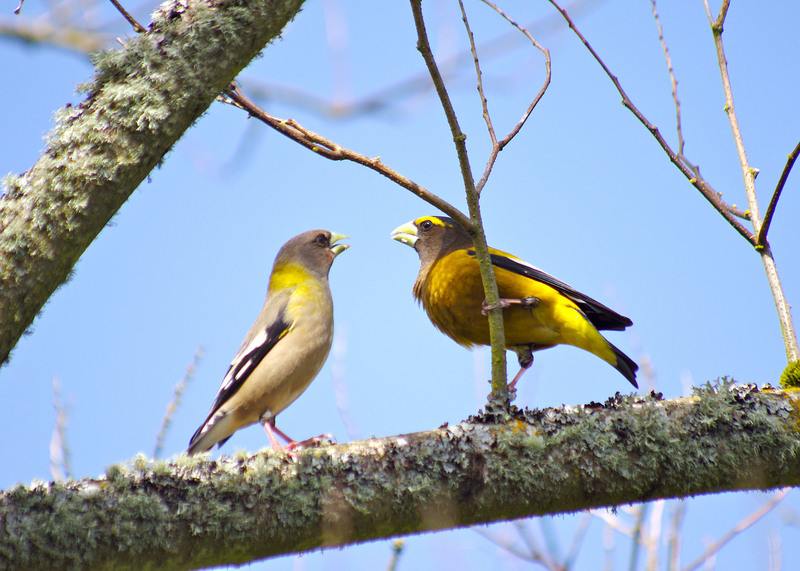evening grosbeak (Coccothraustes vespertinus) -Photo by Martyne Reesman, Oregon Department of Fish and Wildlife-
Evening Grosbeak (Coccothraustes vespertinus)
This sturdy-looking bird has a large head, short tail, and massive conical bill adapted for seed eating. The male plumage features bold patches of lemon yellow shading into olive, then brown and black, with white secondaries creating a flashy wing-patch easily seen in flight. The male's bill is chalky white in winter, but changes in early spring to a pale green that matches the new growth at the tips of spruce boughs, where they often nest. Many encounters with this species are of individuals heard flying high overhead, leaving the observer with little else to note.
The Evening Grosbeak is an uncommon to common year-round resident. It is not an uncommon sight anywhere in Oregon. In general, this species spend the summer in mountainous forests statewide, breeding in the lowlands of the south Willamette Valley. In spring, this grosbeak may be found in significant numbers around towns and cities of western Oregon. Lowland areas in eastern Oregon may also see minor spring incursions and birds can be found in desert oases during fall and spring. It often moves into lowlands in winter.
Female and Male shown
Date 29 April 2012, 15:24
Source evening_grosbeak_pair_reesman_odfw
Author Oregon Department of Fish & Wildlife
Source: https://commons.wikimedia.org/wiki/File:Evening_grosbeak_pair_reesman_odfw_(15432741907).jpg
The evening grosbeak (Coccothraustes vespertinus) is a passerine bird in the finch family Fringillidae found in North America. The International Ornithologists' Union and the Handbook of the Birds of the World place the evening grosbeak in the genus Hesperiphona. However, the species is named Coccothraustes vespertinus (in the same genus as the hooded grosbeak and the hawfinch) by the Clements Checklist and the American Ornithologists' Union. The genus Hesperiphona was introduced by Charles Lucien Bonaparte in 1850. The name is from Ancient Greek hesperos, "evening", and phone "cry", and the specific vespertina is Latin for "evening".
Order: Passeriformes
Family: Fringillidae
Subfamily: Carduelinae
Genus: Coccothraustes
Species: Coccothraustes vespertinus (W. Cooper, 1825)
Synonyms: Hesperiphona vespertina
